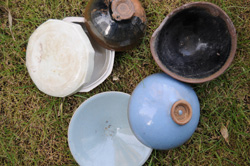Private and institutional collecting
Private collecting – visions and circumstances
‘... the phenomenon of collecting loses its meaning as it loses its personal owner. Even though public collections may be less objectionable socially and more useful academically than private collections, the objects get their due only in the latter’ (Walter Benjamin, 1931) Privately owned, artworks exist in the physical, social and psychic worlds of individuals. Collecting varies with time and circumstance, and the understanding of historical art is re-invented by individuals of successive times. The mixture of continuity and evolution of meanings lends art its mystique and differs its collecting from that of mere souvenirs or historical evidence. One begins however, by stating the obvious. Collecting is constrained by what there is to collect. Much of culture is momentary or perishable. Performances vanish as they are played, elegant gatherings only persist in recollection. Many kinds of objects deteriorate rapidly, especially in unforgiving climates such as the humid regions of southern China. What remains is sometimes out of proportion to its relative contemporary importance. For instance, in the last century, Chinese grave objects from the Song (960-1279) and earlier periods emerged in quantity. Previously rarely seen and less discussed by connoisseurs, they became a ‘fresh field’ for collecting, though now this archeological pillage is increasingly restricted. Much of collecting is concerned with the knowledge required to make fine distinctions. Acquiring this knowledge is often as significant as accumulating objects themselves, and the ability to demonstrate it is one of the social pleasures of many collectors. There are variations in the scope and character of distinctions: there are collectors who attend to academic discourse with its concern for historical order and attribution, and others who use taste to organization a wide range of interests.
|


